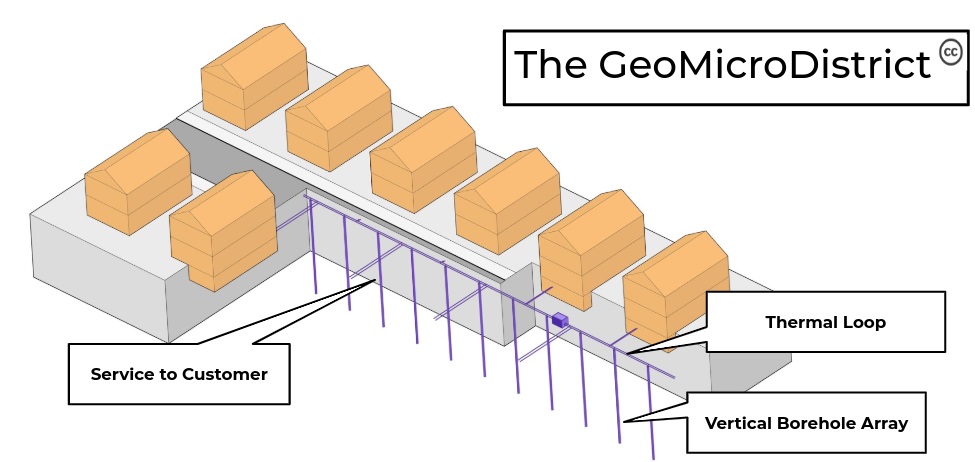It sounds great for a city or state to stop adding natural gas to its energy mix but for certain applications that’s not easy – such as heating buildings. But there’s an interesting idea to create “GeoMicroDistricts”, sort of a microgrid except with hot water instead of electricity. GreenTech Media has a story (read it here) about an effort to do that in Boston with three pilots overseen by the utility Eversource:
The Cambridge, Massachusetts-based nonprofit Home Energy Efficiency Team (HEET) advances a concept called the GeoMicroDistrict, which would see heat pumps in individual buildings transferring thermal energy between a shared district water loop and their own heating and cooling distribution systems. In such a system, gas companies could deliver thermal energy instead of gas — minus the carbon, says Audrey Schulman, HEET’s co-executive di
“Can gas companies change from just sending gas out in one direction through that gas tree to being able to manage thermal energy — bidirectional — in an efficient way through something as simple as water?” Schulman asks.
A nice touch is that the GeoMicroDistrict concept is available for use by interested parties under a Creative Commons license.


 Return to the Concord Monitor
Return to the Concord Monitor
“At what temperature do heat pumps become ineffective?
The optimal temperature range for conventional air source heat pump operation is above 25 to 30 degrees Fahrenheit. The heat pump begins to lose efficiency once temperatures dip to 40 degrees and is no longer the most efficient heating option once temperatures fall to 25 to 30 degrees.” – Google
My friend had a heap pump up in Lebanon, NH several years ago. Completely useless in the winter, and he had outrageous electricity bills.
The technology is much better than it used to be (I had one in the 80s and it sucked) but New Hampshire is definitely on the edge of their winter effectiveness.
This article relates to ground source heat pumps while the comments indicate negative experiences with air source heat pumps. These are two very different technologies.
Ground source, or geothermal heat pumps deliver over 400% efficiency year after year in Nome, Alaska and Pensacola, Florida. The US DoE suggests their lifespan is more than double that of air source heat pumps and require nearly zero maintenance.